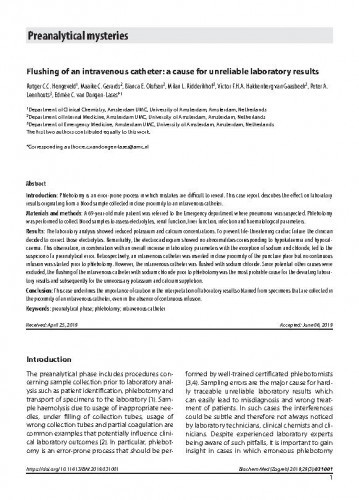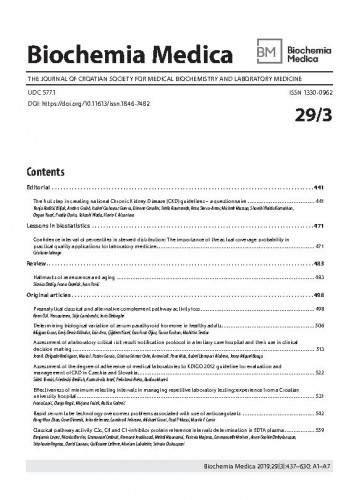Phlebotomy is an error-prone process in which mistakes are difficult to reveal. This case report describes the effect on laboratoryresults originating from a blood sample collected in close proximity to an intravenous catheter.Materials and methods: A 69-year-old male patient was referred to the Emergency department where pneumonia was suspected. Phlebotomywas performed to collect blood samples to assess electrolytes, renal function, liver function, infection and haematological parameters.Results: The laboratory analysis showed reduced potassium and calcium concentrations. To prevent life-threatening cardiac failure the cliniciandecided to correct those electrolytes. Remarkably, the electrocardiogram showed no abnormalities corresponding to hypokalaemia and hypocalcaemia.This observation, in combination with an overall increase in laboratory parameters with the exception of sodium and chloride, led to thesuspicion of a preanalytical error. Retrospectively, an intravenous catheter was inserted in close proximity of the puncture place but no continuousinfusion was started prior to phlebotomy. However, the intravenous catheter was flushed with sodium chloride. Since potential other causes wereexcluded, the flushing of the intravenous catheter with sodium chloride prior to phlebotomy was the most probable cause for the deviating laboratoryresults and subsequently for the unnecessary potassium and calcium suppletion.Conclusion: This case underlines the importance of caution in the interpretation of laboratory results obtained from specimens that are collected inthe proximity of an intravenous catheter, even in the absence of continuous infusion.
Sažetak

 Biochemia medica : the journal of Croatian Society for Medical Biochemistry and Laboratory Medicine : 29,3(2019) / glavna i odgovorna urednica Daria Pašalić.
Biochemia medica : the journal of Croatian Society for Medical Biochemistry and Laboratory Medicine : 29,3(2019) / glavna i odgovorna urednica Daria Pašalić.